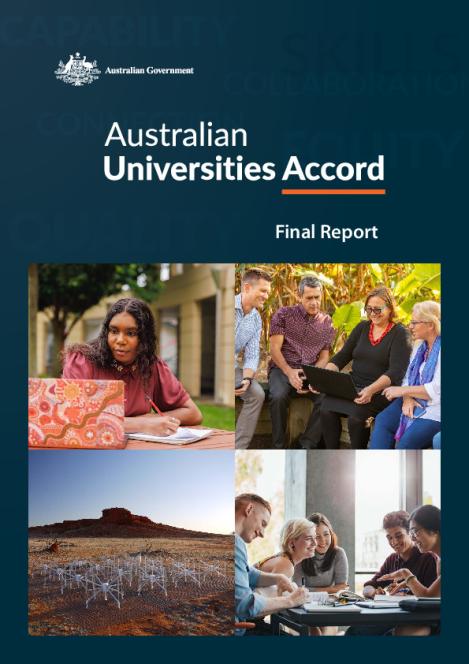 |
| Australian Universities Accord Final Report, 25 February 2024 |
Australian Universities Accord final report (25 February 2024), waited until recommendation 40 to get to what is always the big issue in tertiary education: the funding model. The Panel focuses on skills needs for Australia, equitable access for students, balanced with a demand driven approach. Part of this already mentioned are fee-free preparatory courses (although a convincing case has not been made as to why these need to be fee free).
The Panel also recommends to "stop the practice of providing only partial funding for additional students when a university is overenrolled". As an educator, rather than an administrator, I don;t really understand what this is about: if the system is demand driven, with students paying fees, how can a university be "over-enrolled"?
Recommendation 41 provides more detail on funding. One point is that the Panel refers to "publicly funded universities". However, is there any reason why the Australian government would not support eligible students at any accredited institution: public, private, for-profit, or overseas.
The Panel is not proposing to change the current system, where funding is partly to the institution, and partly a subsidized loan to students. In particular a voucher system, where the money only goes to the institution when a student enrolls. Also, while proposing more funding for the VET sector, this would be kept separate from allocations for universities. The Panel proposes students can choose a microcredential, diploma, bachelor degree, postgraduate degree, or other. However, if institutions don't provide these options, or make them hard to enroll in, students will not be able to do that. Flexibility may be contrary to the interests of larger institutions, who want to lock students into a full degree. There may need to be regulations requiring, or financial incentives to support, flexibility.
The Panel take a traditional, and flawed approach, of proposing additional funding for First Nations, low SES and students with disability. This assumes these are a tiny group of students who are in some way deficient, and need fixing. I suggest abandoning this approach and instead fund the design and delivery of students with a wide range of interests, and abilities.
Higher Education Future Fund
In Recommendation 43 the Panel proposes a $10B Higher Education Future Fund. This is a relatively modest sized fund. The uses for the fund also seem unadventurous: digital infrastructure and student housing. The cost of digital infrastructure for a university is tiny compared to salaries, and seems hardly worth setting up such a fund for (unless building of new software, data centers, and the like are proposed). Funding student housing seems an odd choice for funding. Most students study from home, while working part time, and so do not need student housing. Co-contributions from universities are likely not worth the political trouble it would cause, and the Federal Government is more likely to simply provide all the money for the fund, perhaps as part of a deal with the minor parties in the Senate. The Government could force a university co-contribution, by diverting part of additional funding for universities to the fund. This way the Government would get the political kudos for increased university funding, plus kudos from expenditure from the fund.
No comments:
Post a Comment